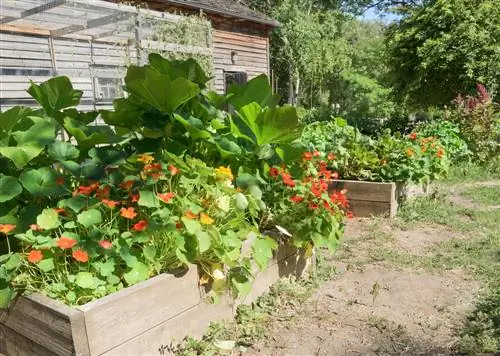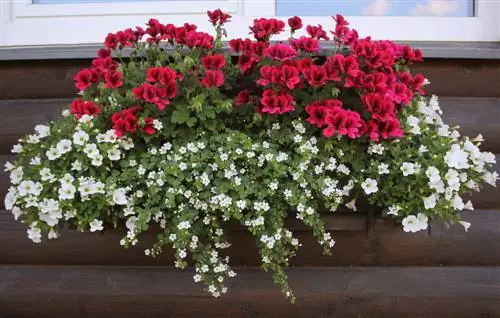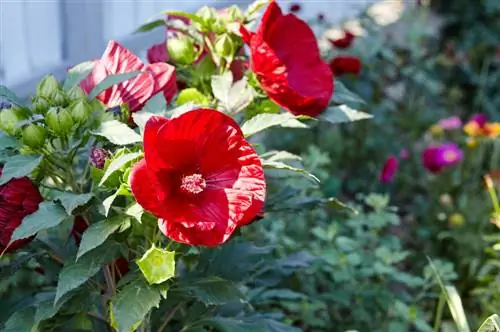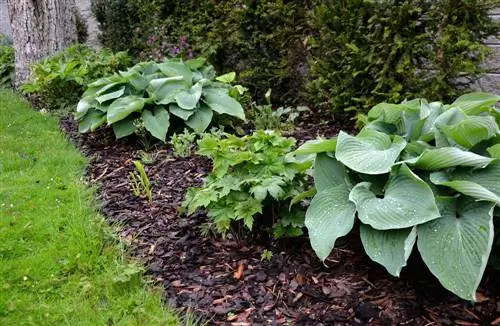- Author admin [email protected].
- Public 2023-12-16 16:46.
- Last modified 2025-01-23 11:22.
Within a short time, the nasturtium climbs along balcony railings, envelops flower beds and climbs almost every climbing opportunity. She looks impressive not only in solo positions, but especially when combined with the right partners.
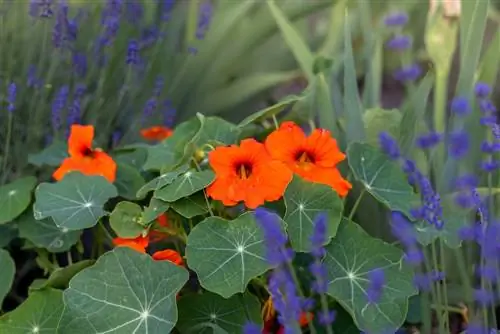
What factors should you consider when combining nasturtiums?
If you want to accent nasturtiums, consider the following factors when choosing companion plants:
- Flower color: yellow, orange, red or pink, rarely white
- Flowering time: End of June to October
- Location requirements: sunny, loose and humus-rich soil
- Growth height: up to 20 cm
The nasturtium can climb or hang down exuberantly. But without the right conditions, it grows along the ground like a ground cover and remains low. Take your growth and the size you want to achieve into account when making combinations.
Since the nasturtium likes it sunny, its companion plants should not nag when exposed to full sun.
Also, remember that nasturtium produces bright and showy flower colors. It goes well with similarly colored plants, but also with those that create color contrasts.
Combine nasturtiums in the bed or in the balcony box
The picturesque overhanging growth of the nasturtium is often used to visually flatter balcony boxes. The nasturtium harmonizes wonderfully with Mediterranean herbs and lush, but simply colored balcony flowers. In the bed, however, the nasturtium is best displayed in the foreground. Planted there next to perennials, it can create pretty highlights. It particularly stands out next to purple flowering plants with opposite flower shapes.
Optimally suitable planting partners for nasturtiums include:
- Marigolds
- Lavender
- Liver Balm
- Feverfew
- Scented Nettle
- ornamental sage
- Mallows
- Rosemary
Combine nasturtiums with lavender
With its essential oils, lavender is able to drive away the black aphids that are often found on nasturtiums. This combination is also convincing because both plants have similar location requirements.
Combine nasturtium with scented nettle
Scented nettles are attractive counterparts to nasturtiums. They are also often visited by bees and bumblebees and like sunny locations to grow. The impressive thing about this combination is that the flowers of the two plants stand out from each other. While the nasturtium has hood-shaped flowers, the sweet nettle has elongated, narrow flower spikes. Their colors also contrast.
Combine nasturtiums with feverfew
The nasturtium and feverfew make an excellent duo for a balcony box. The nasturtium shines through and the feverfew stays in the background with its white and delicate flowers. This combination is not intrusive, but rather lovely and characterized by lightness.
Combine nasturtiums as a bouquet in the vase
Many people know that nasturtiums can climb well and are edible. But very few people know that they are also suitable for the vase and can even look extremely pretty in it. Cut the flower stems of the nasturtium and arrange them with marigolds, girl's eye and/or marigolds. There is a great color balance in this interaction. If you want something a little more eye-catching, combine violet nettles and knapweed with yellow and orange nasturtiums.
- Daylilies
- Autumn Asters
- Knapweeds
- scented nettles
- Tagetes
- Marigolds
- Girl's Eye


